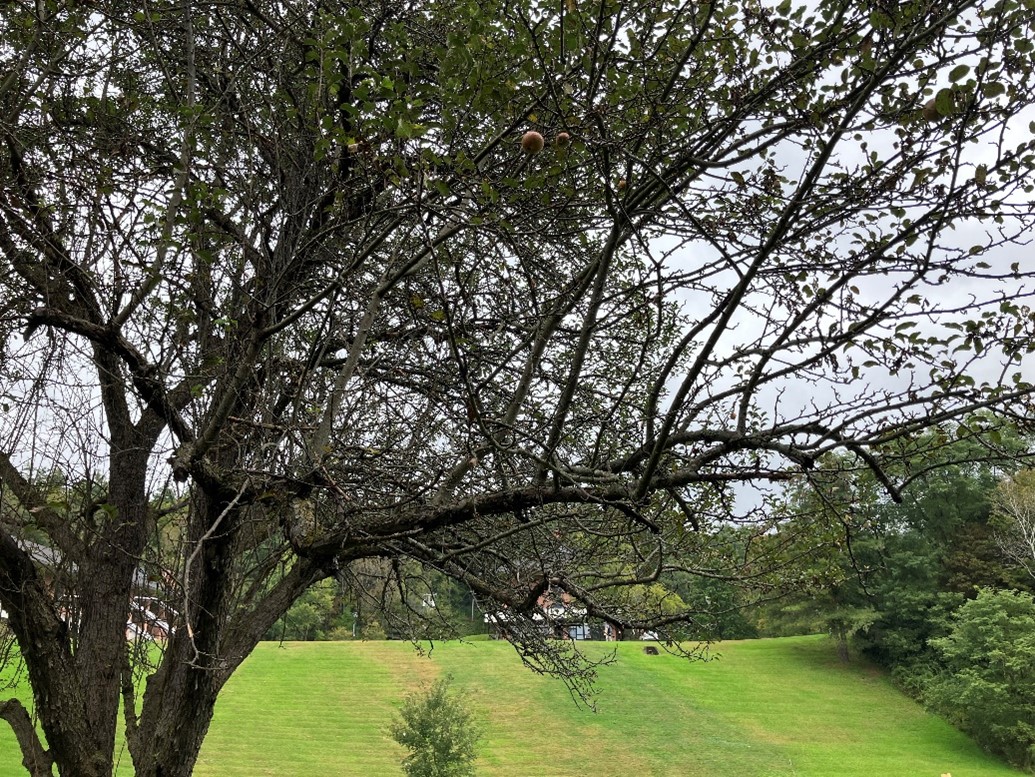Ah, fall in Vermont. Chilly mornings, picturesque leaves, and perfectly ripe apples. Well…hold the chilly mornings. And the leaves. And maybe even the apples.
It’s undeniable the New England state that was once dubbed one of the best places to visit in autumn is quickly turning into a region of perennial summer. Despite the fact that autumn officially began on September 22nd, the first few days of October recorded temperatures around 80 degrees.
Climate change has come to Vermont. But what does that look like? And what effects will it have on Vermont’s agriculture? One can infer that the effects climate change will disruptive at the very least, and will be outright catastrophic at the very worst.
Three years ago, the University of Vermont ran a study on the matter. Their main takeaways? Simply put, Vermont is becoming much warmer and wetter. In central Vermont, the town of Rutland is experiencing as many as 12 days of extreme precipitation per year.
While that might not seem so dramatic when held up against the full measure of a year, the situation becomes all the more concerning when one notes that Rutland used to experience only four days of heavy rain each year.
That’s eight extra days of rain, and the study that discovered this was conducted in 2020. It’s easy to assume that the problem has gotten worse since then, especially because climate change is intensifying globally. Furthermore, long periods of continuous rain are very bad for most plants– more specifically, they are especially harmful for fruit trees.
Apple trees are iconic practically everywhere in New England, but they’re especially prized in Vermont. In 1999, Vermont designated the apple as its state fruit. In a similar vein, apple pie became the state pie.
However, climate change is now threatening this signature fruit–its warmer temperatures actually mean later frosts (which is an unexpected boon for some farmers), but researchers predict that crops will face increased risks of severe damage by late frosts.
To better understand the effects of climate change on Vermont agriculture at a smaller scale, Voices reached out to a local Vermont resident and gardener.
Libby Holmes is the Director of International Programs at the Putney School. She’s lived in Vermont since 1988 and worked at a local vegetable farm in 1990-1992. Today, she has her own vegetable garden, and she’s started to notice some concerning changes.
Having a garden means that she’s had to pay close attention to overnight temperatures and in recent years she’s noticed that the fall frosts are coming much later. While that’s not necessarily a bad thing, (as the University of Vermont observed) it means that the frosts have greater potential to do more harm when they arrive, especially to apple trees.
Previously, Libby described the correlation between a mild autumn and an ideal apple season. She noted that light frosts and warm days are good for apples and leaves alike (leaf peeping is a fairly important part of Vermont’s economy), and added onto this by stating that steady weather is incredibly vital during the growing seasons.
Although Libby’s life is not as dependent on apples as that of a farmer’s, she’s aware of how much the Vermont economy is dependent on this resource.
“Apple orchards in Vermont already face challenges on the national and international market because they are smaller and more vulnerable. Including ‘value-added’ products and experiences (pick-your-own, particularly) helps these orchards continue on with at least a small profit,” said Libby.
She continued, “More orchards will sell land to development if they cannot make a profit. Beyond Vermont, seasonal pickers from Jamaica and other places will not have the income they depended on for years and years.”
To better understand what the concerning patterns look like on a larger level, Voices reached out to a local orchard. But at the time of publication , Green Mountain Orchards could not be reached for comment.
However, a Facebook post from May proves that their crops have taken an undeniable hit.
It read, “Unfortunately, the freeze appears to have done significant damage to our apples and blueberries. We haven’t assessed our acres yet, but from what we’ve seen so far, there will be very few apples this year.”
This is a pattern; crops in Vermont are suffering because of climate change. While all three sources allude to the worst damage being done because of frost, the unpredictable storm patterns certainly cannot help.
Like many problems, this particular one does not have an easy or feasible solution. The state of Vermont is not a wet towel to be wrung dry when things get unpleasantly damp. Moreover, attempting to dry out large areas of soil to prevent flooding would almost certainly have a negative impact on the local flora and fauna.
However, there is a very tentative solution that comes to mind; focusing on protecting crops from the elements, rather than waiting for the extreme weather to arrive and leave destruction behind.
It’s far from a perfect solution, but it might be what allows Vermonters to hang onto fall—or, at least, for a little while longer.






